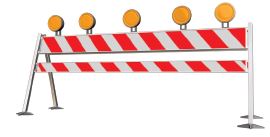Health Access for Independent Living (HAIL) Fact Sheet: Working with Your Health Care Provider
What Are Your Barriers to Health Care?
You can work with your providers more effectively if you understand what the barriers are in your interactions. Health care is a complex issue for many Americans, especially for people with disabilities. Here are some common obstacles to a satisfying health care visit.
Common barriers to health care for people with physical disabilities include: physical access, provider knowledge and attitudes, poor communication and social policies.
Physical Barriers.
People with disabilities may find it difficult to access their health care provider because of the physical space or architecture of the medical office. This very common barrier includes inaccessible parking, uneven pathways to health care offices, inaccessible medical equipment, narrow doorways, etc. Compensating for physical barriers can drain a lot of time and energy. Physical barriers may also cause patients with disabilities to postpone their visit to the doctor, at the cost of taking care of their health.
Provider knowledge.
As we see in Jack’s story above, a provider’s lack of knowledge is one barrier to accessing health care for patients with physical disabilities. Some doctors might say, “I’m not an expert on spina bifida (or whatever your condition is),” while others are willing to research disability conditions to expand their expertise.
Attitudinal Barriers.
Health care providers may view physical disability as an illness or an abnormality that needs to be “fixed” rather than a natural condition of a person’s life. They may fail to recognize that people with disabilities can be healthy. In addition, when a person with a disability does get sick, some health care providers attribute all of the patient’s symptoms to his or her disability and do not explore new health complaints as thoroughly as they should.
Visits are more effective when health care providers understand that people with disabilities lead full lives with varied interests, are capable of making their own life decisions, and that their disability is not their main preoccupation. Even when a chronic illness is part of a person’s disability, viewing a person as “sick” implies that the person is helpless. This attitude from a health care provider can make a person with a disability feel powerless.
Communication Barriers.
Poor communication between a provider and a person with a disability inhibits accurate diagnosis and treatment. (The limited time that doctors spend during visits is also a barrier.) Sometimes the health care provider talks to a person’s aide or caregiver rather than talking directly to the person with the disability. Or maybe the doctor doesn’t communicate in detail because he assumes that a person who has a physical disability is also incapable of making decisions about a course of treatment.
You can take charge of your health care experience by planning ways to overcome the common barriers.
Social Policy.
Policies that prevent people from having access to comprehensive health care can be a huge barrier. Many people with disabilities are on Medicaid, with limited health care coverage that will not pay for many of their health care needs. As a result, it can be difficult to get necessary medical or dental procedures, assistive technology and proper medications. People with disabilities may then go to the emergency room (ER) instead, which is far more expensive than visiting their primary care doctor regularly. ER visits often stabilize but do not solve a person’s health problems.


User Comments/Questions
Add Comment/Question